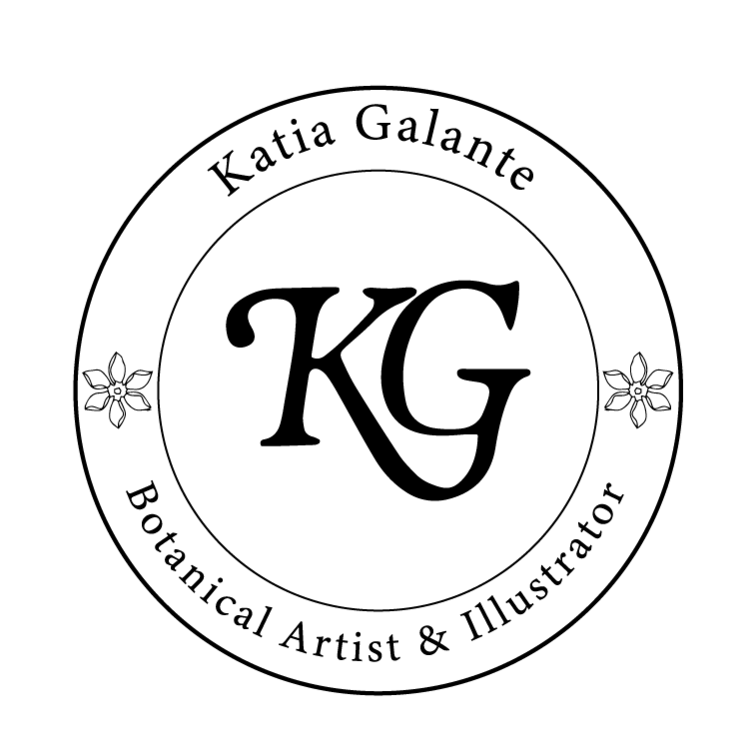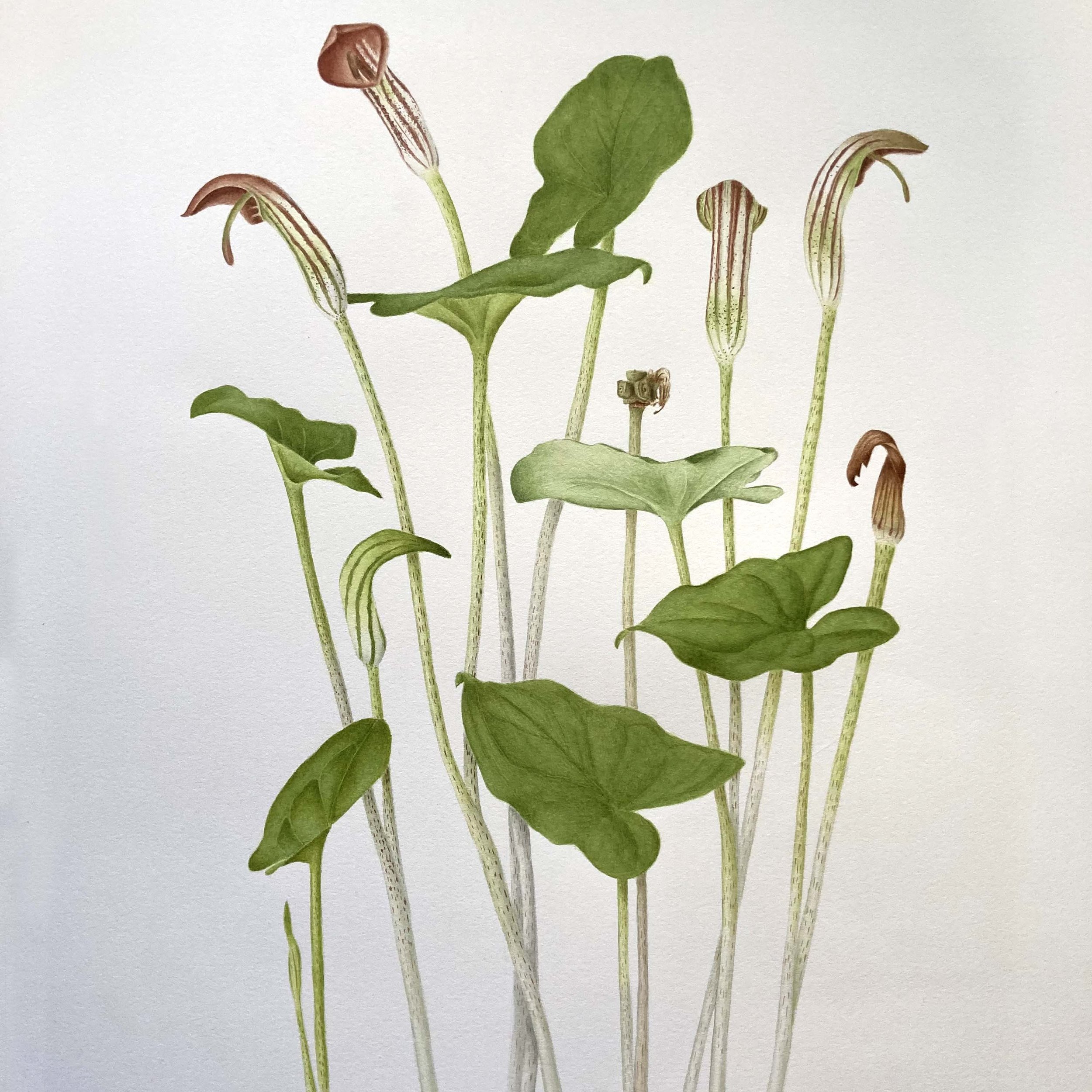Today, I am excited to delve into the captivating world of greys in botanical painting. While many may think of grey as a dull and uninspiring color, in reality, it is a versatile hue that can be incredibly useful when used skillfully. So, let's embark on this artistic journey and unlock the secrets of mixing and using greys in our botanical masterpieces!
Origins of Grey Pigments:
Before we dive into the mixing techniques, let's briefly explore the origins of grey pigments. Throughout art history, the quest for achieving the perfect grey hue has been a journey filled with experimentation and discovery. In ancient times, artists relied on a limited palette, mainly using black and white pigments to create grey. The combination of carbon-based black pigments, like charcoal, and white pigments, such as chalk or lead white, allowed artists to achieve a range of grey tones.
However, as the art world evolved and trade routes expanded, artists gained access to a broader range of pigments derived from various sources. These new pigments not only improved the range of colors available but also revolutionized the way greys were mixed.
One of the earliest grey pigments used in art was Payne's Grey, named after the British watercolorist William Payne. Payne's Grey is a bluish-grey pigment made from a mixture of blue and black pigments, often including ultramarine blue, iron blue, or indigo, blended with carbon black. This pigment became popular in the 18th century due to its soft, cool, and transparent nature, making it ideal for rendering skies, shadows, and subtle atmospheric effects in botanical paintings.
Another popular grey pigment is Neutral Tint, a mixture of various pigments, including blue, black, and sometimes brown. Neutral Tint creates a versatile and neutral grey with a slightly warm or cool bias, depending on the specific pigments used in the mix. Its name originates from its ability to blend harmoniously with many other colors.
Lunar Black is another intriguing grey pigment with a unique history. It is a bluish-grey pigment derived from lunar soil, or more specifically, from lunar meteorites. The pigment was developed by suspending the meteoritic material in a binding medium, producing a pigment that visually resembles the surface of the moon. While Lunar Black is not widely used due to its rarity and cost, it remains a symbol of humanity's exploration beyond Earth's boundaries.
Davy's Grey is a grey pigment named after Sir Humphry Davy, a renowned British chemist and inventor. It is a warm grey, often created by mixing raw sienna or burnt sienna with black pigments. Davy's Grey was commonly used in the 19th century and continues to be favored by some artists for its earthy and organic appearance.
In the modern era, with advancements in technology and chemistry, artists now have access to an even broader range of grey pigments. Synthetic pigments have been developed to replicate and enhance the properties of traditional pigments, providing artists with an extensive palette of greys to choose from.
Mixing Greys:
However, if you have been following me at all, you know I love to mix my own greys, as I find the ready mixed ones a bit dull and chalky, and if you use these for your shadows, they will tend to be flat and lifeless.
Mixing your own greys allows for a more personalized and nuanced touch in your botanical paintings. It's an art form in itself! To get started, you'll need a limited palette comprising primary colors like red, blue, and yellow. Remember, the proportions of each color you use, and which yellow, blue and red you use, will influence the warmth or coolness of the resulting grey.
Here are some basic grey mixtures you can experiment with:
Cool Grey I: Winsor Blue (Green Shade) + Quinacridone Magenta + Lemon Yellow (Daniel Smith). This cool grey works well for darkening green color.
Warm Grey I: Winsor Blue (Red Shade) + Quinacridone Magenta + Transparent Yellow. This warm grey is perfect for darkening reds
Cool Grey II: Winsor Blue (Red Shade) + Quinacridone Magenta + Lemon Yellow (Daniel Smith). You can use this for white flowers
Warm Grey II: Winsor Blue (Green Shade) + Quinacridone Magenta +Transparent Yellow.
NOTE: If you want to watch the video of how I mix these colors then click HERE!
Using Greys in Botanical Painting:
Once you've mastered the art of mixing greys, it's time to unleash their magic in your botanical artwork. Greys can be employed in various ways to enhance the overall visual appeal of your paintings:
In this painting of Arisarum vulgare, the botanical grey was used for the stalks and the “white” part of the flowers
Creating Depth: Use darker greys in the shadows and lighter greys in the highlights to add depth and dimension to your subjects.
Texture and Detail: Greys are perfect for adding subtle textures and intricate details, such as delicate veins on leaves or fine lines on petals.
Contrast and Balance: The judicious use of greys alongside vibrant colors can create a striking contrast and bring harmony to your artwork.
Depicting White Flowers. When you paint white flowers you actually paint the shadows ans a grey mix will convey the shadows perfectly well.
Join My Color Mixing Classes:
If you're eager to delve deeper into the world of color mixing and harness the potential of greys and other hues, I invite you to join my online classes:
In these classes, I show you step by step how to mix both luminous colors but also beautiful neutrals. Let's unlock your full creative potential and take your artistry to new heights!
Do you mix your own greys? Or do you use the ready made ones? Let me know your thoughts in the comments below.Till next time
Create and be happy!








